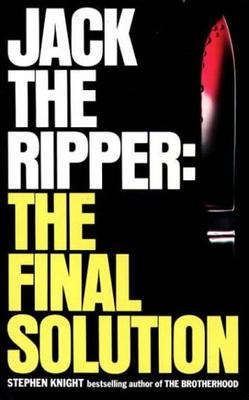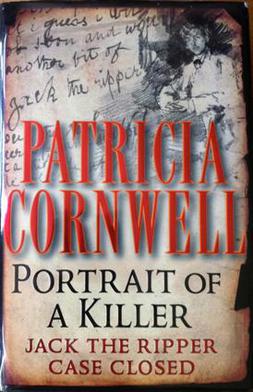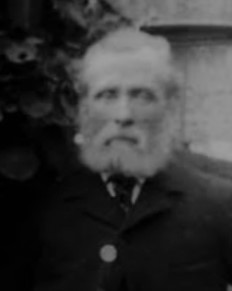Related Research Articles

Patricia Cornwell is an American crime writer. She is known for her best-selling novels featuring medical examiner Kay Scarpetta, of which the first was inspired by a series of sensational murders in Richmond, Virginia, where most of the stories are set. The plots are notable for their emphasis on forensic science, which has influenced later TV treatments of police work. Cornwell has also initiated new research into the Jack the Ripper killings, incriminating the popular British artist Walter Sickert. Her books have sold more than 120 million copies.

The Hammersmith nude murders is the name of a series of six murders in West London, England, in 1964 and 1965. The victims, all prostitutes, were found undressed in or near the River Thames, leading the press to nickname the killer Jack the Stripper. Two earlier murders, committed in West London in 1959 and 1963, have also been linked by some investigators to the same perpetrator.

A series of murders that took place in the East End of London from August to November 1888 was blamed on an unidentified assailant who was nicknamed Jack the Ripper. Since then, the identity of the killer has been widely debated, with over 100 suspects named. Though many theories have been advanced, experts find none widely persuasive, and some are hardly taken seriously at all.

Jack the Ripper: The Final Solution is a book written by Stephen Knight first published in 1976. It proposed a solution to five murders in Victorian London that were blamed on an unidentified serial killer known as "Jack the Ripper".
Martin Austin Fido was a university professor, true crime writer and broadcaster. His many books include The Crimes, Detection and Death of Jack the Ripper, The Official Encyclopedia of Scotland Yard, Serial Killers, and The Murder Guide to London. He is also one of the authors of The complete Jack the Ripper A to Z.

Portrait of a Killer: Jack the Ripper—Case Closed (ISBN 0-425-19273-3) is a 2002 nonfiction book by crime novelist Patricia Cornwell that presents the theory that Walter Sickert, a German-British painter, was the 19th-century serial killer known as Jack the Ripper.

Thomas Neill Cream, also known as the Lambeth Poisoner, was a Scottish-Canadian medical doctor and serial killer who poisoned his victims with strychnine. Cream murdered up to ten people in three countries, targeting mostly lower-class women, sex workers and pregnant women seeking abortions. He was convicted and sentenced to death, and was hanged on 15 November 1892.
Aaron Kosminski was a Polish barber, hairdresser, and suspect in the Jack the Ripper case.

A Study in Terror is a 1965 British thriller film directed by James Hill and starring John Neville as Sherlock Holmes and Donald Houston as Dr. Watson. It was filmed at Shepperton Studios, London, with some location work at Osterley House in Middlesex.
Jack the Ripper, a notorious serial killer who terrorized Whitechapel in 1888, has been featured in works of fiction ranging from gothic novels published at the time of the murders to modern motion pictures, televised dramas and video games.
Mary Pearcey was an English woman who was convicted of murdering her lover's wife, Mrs. Phoebe Hogg, and child, Tiggy, on 24 October 1890 and hanged for the crime on 23 December of the same year. The crime is sometimes mentioned in connection with Jack the Ripper, and Pearcey has been posited as a Ripper candidate.

The Servant Girl Annihilator, also known as the Midnight Assassin, was an unidentified American serial killer who preyed upon the city of Austin, Texas, in 1884 and 1885. The sobriquet originated with the writer O. Henry. The series of eight axe murders were referred to by contemporary sources as the Servant Girl Murders.
Richard Whittington-Egan was a British writer and criminologist, the author of Liverpool Colonnade and Liverpool Roundabout, two colourful chronicles of Liverpool's historical characters, crimes and mysteries. A leading author on true crime over a long period of time, he is acknowledged also as an expert on Jack the Ripper.

Jack the Ripper was an unidentified serial killer active in and around the impoverished Whitechapel district of London, England, in 1888. In both criminal case files and the contemporaneous journalistic accounts, the killer was also called the Whitechapel Murderer and Leather Apron.
Nigel Cawthorne is a British freelance writer, conspiracy theorist and editor of both fiction and non-fiction. He is also a journalist and specializes in writing about history.
Brett McBean is best known as an award-winning Australian horror, thriller and speculative fiction writer. He was born and raised in Melbourne. He is also a drummer and has an Advanced Diploma from Box Hill College of Music

Thomas Edmund Alexander Stowell CBE, FRCS was a British physician.

Jack the Ripper is a drama television miniseries produced for Thames Television and CBS based on the notorious Jack the Ripper murder spree in Victorian London. It was first broadcast on ITV.

Gabriel Antonio Pombo is a Uruguayan writer and lawyer, who is known for his books, essays and interviews relating to serial murderers, and particularly about the famous case of Jack the Ripper, the mysterious and never discovered murderer of London. Gabriel Pombo even wrote a humorous short story fiction, which tells how, during a foggy night a very confused Jack the Ripper mistakenly entered the offices of Scotland Yard believing that was a tavern.

Charles Allen Lechmere, also known as Charles Allen Cross, was a native of East London who reportedly worked as a carman for the Pickfords company for more than 20 years. On 31 August 1888, Lechmere apparently found the body of Mary Ann Nichols, the first of Jack the Ripper's five canonical victims, while on his way to work. Although long regarded as merely a passer-by at the crime scene, Lechmere has since been named as a Jack the Ripper suspect by contemporary true crime writers.
References
- ↑ "Nigel Morland Bibliography - Checklist of First Edition Books". Classiccrimefiction.com. Retrieved 2013-07-12.
- ↑ John (2012-02-02). "Pretty Sinister Books: FIRST BOOKS: The Moon Murders - Nigel Morland". Prettysinister.blogspot.ae. Retrieved 2013-07-12.
- ↑ Rumbelow, Donald (2004). The Complete Jack the Ripper: Fully Revised and Updated. Penguin Books. ISBN 0-14-017395-1. pp. 211–213.